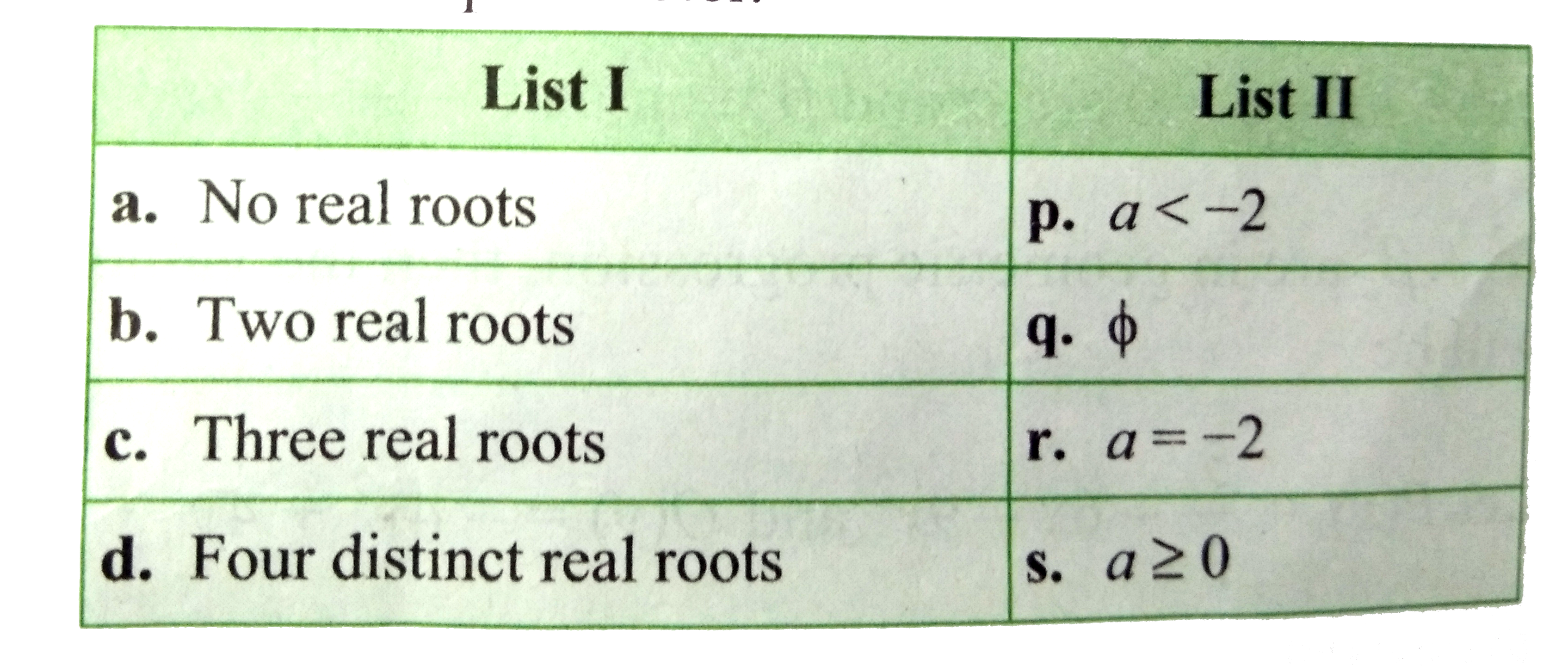If the equation has no real root, then λ lies in the interval Solution in Tamil
(−∞,0)
(−∞,6)
(6,∞)
(0,∞)
The correct Answer is:B
If equation has no real roots, then (1) must have both roots negative for which
−b2a<0⇒λ<0 (5)
f(0)>0or9>0
∴λ∈(−∞,6) [form(2),(3),(5)]
Also for no real roots we can have D<0
⇒λ2−36<0⇒λ∈(−6,6)
Hence, λ∈(−∞,6)
Topper's Solved these Questions
- BOOK - CENGAGECHAPTER - THEORY OF EQUATIONSEXERCISE - Exercise (Matrix)6videos
THEORY OF EQUATIONS
- BOOK - CENGAGECHAPTER - THEORY OF EQUATIONSEXERCISE - Exercise (Numerical)43videos
THEORY OF EQUATIONS
- BOOK - CENGAGECHAPTER - THEORY OF EQUATIONSEXERCISE - Exercise (Multiple)38videos
THEORY OF EQUATIONS
- BOOK - CENGAGECHAPTER - STRAIGHT LINESEXERCISE - JEE Advanced Previous Year4videos
STRAIGHT LINES
- BOOK - CENGAGECHAPTER - THREE DIMENSIONAL GEOMETRYEXERCISE - Question Bank12videos
THREE DIMENSIONAL GEOMETRY
Similar Questions
Match the following for the equation x2+a|x|+1=0 where, a is a parameter.
 03:09View Solution
03:09View SolutionIf x=2+223+213, then the value of x3−6x2+6x is:
03:11View Solutionif c≠0 and the equation p2x=ax+c+bx−c has two equal roots, then p can be
04:17View Solutionabout to only mathematics
02:26View SolutionThe equation of the plane which has the property that the point Q(5,4,5) is the reflection of point P(1,2,3) through that plane, is ax+by+cz=d where a,b,c,d∈N. Find the least value of (a+b+c+d).
01:58View SolutionIf ax^(2)-(2a+3)x+(3+5a)=0 has no real roots,then a lies in the interval
02:00View Solutionif ax^(2)-(2a+3)x+(3+5a)=0 has no real roots then a lies in the interval ?
View SolutionIf the roots of the equation are A.P the beta lies in the interval
04:00View SolutionFor what value(s) of λ the quadratic equation x2+λx+(λ+1.25)=0 has :
(i) coincident roots (ii) real and distinct roots (iii) no real roots?05:02View SolutionIf the equation x^4- λx^2+9=0 has four real and distinct roots, then λ lies in the interval
01:53View SolutionIf equation 2x3−6x+2sina+3=0,a∈(0,π) has only one real root, then the largest interval in which a lies is
05:14View SolutionLet a,b and s be the sides of a scalane triangle. IF λ is a real number such that the roots of the equation
x2+2(a+b+c)x+3λ(ab+bc+ca)=0 are real, then the interval in which λ lies is04:18View SolutionIf the equation x4−λx2+9=0 has four real and distinct roots, then λ lies in the interval
View SolutionIf the equation has no real root, then λ lies in the interval
03:00View SolutionIf equation 2x3−6x+2sina+3=0,a∈(0,π) has only one real root, then the largest interval in which a lies is
02:59View Solution

